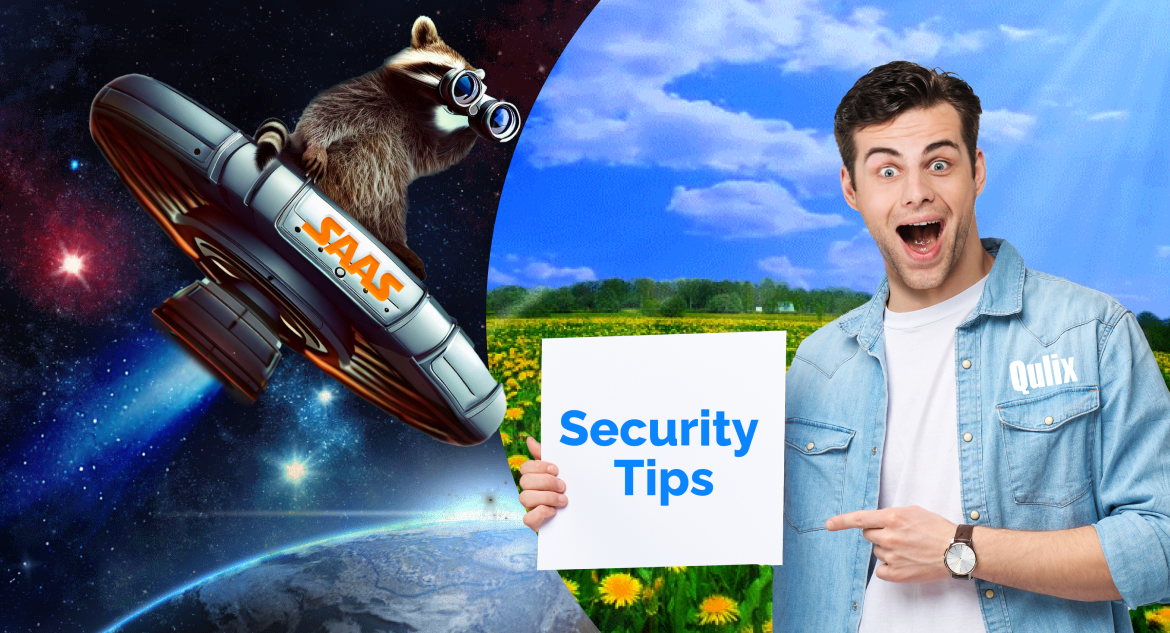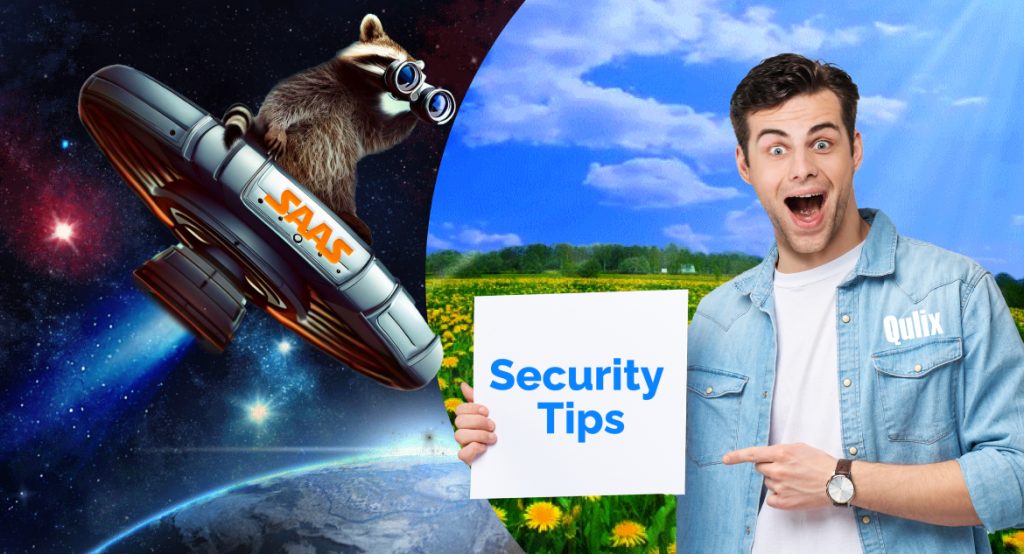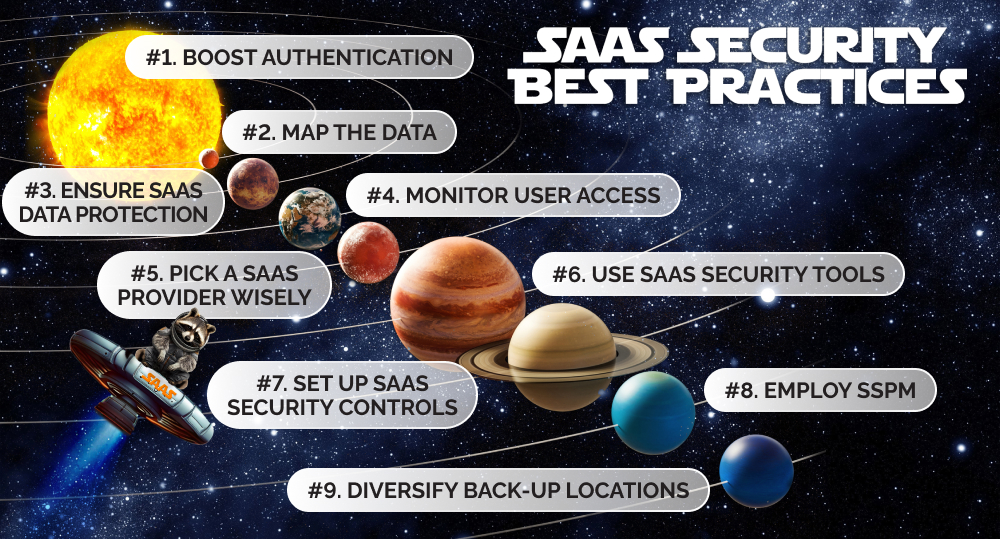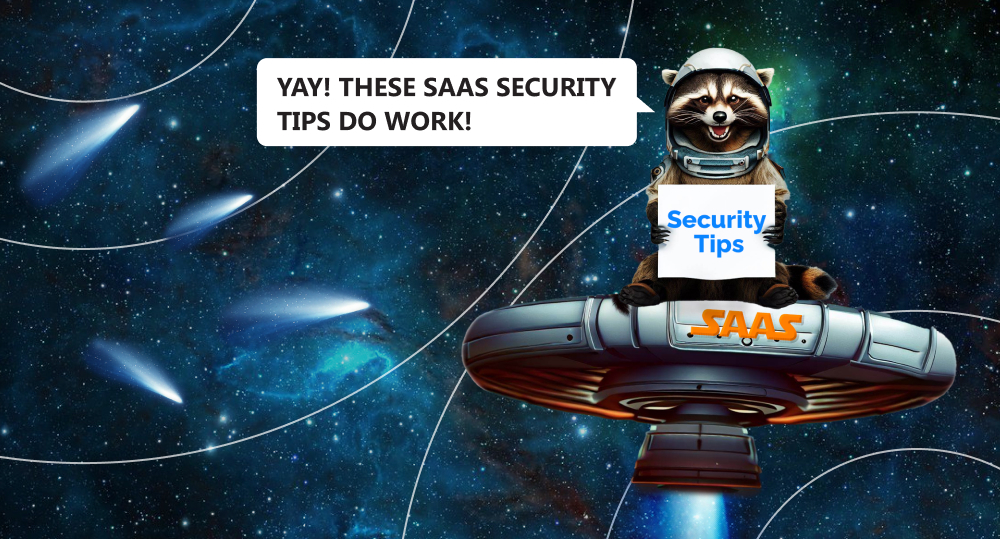Surfing the internet space in search of a time-tested SaaS security checklist that can help you launch and protect your cloud app? Stop skimming through an infinity of web pages. Instead, linger here for a couple of minutes, as in this article, not only do we explore the SaaS universe but also share unique, expert-level tips on how to secure SaaS applications.
Besides, here, we explain how the choice of architecture impacts SaaS product reliability and help you make the right decision. Read on!
written by:
Alexey Krutikov
Project Management Professional (PMP)
Surfing the internet space in search of a time-tested SaaS security checklist that can help you launch and protect your cloud app? Stop skimming through an infinity of web pages. Instead, linger here for a couple of minutes, as in this article, not only do we explore the SaaS universe but also share unique, expert-level tips on how to secure SaaS applications.
Contents
SaaS in a Nutshell
The history of SaaS adoption goes back to 1999 — the year when three forward-looking entrepreneurs developed the first SaaS business from scratch. Most likely, you've heard about this company or even employed its solution, as we're talking about Salesforce — one of the most successful CRM tools.
Lots of changes have taken place in the digital world since then but the popularity of SaaS products only keeps growing, with organizations using about 130 cloud-based apps on average each day.
But what really is SaaS, and why is it gaining momentum today? Well, along with IaaS (Infrastructure-as-a-Service) and PaaS (Platform-as-a-Service), SaaS a.k.a. Software-as-a-Service is one of the cloud service models that presupposes the on-demand delivery of software products over the internet on a subscription basis.
Benefits
- When selecting SaaS products, you shift the burden of physical infrastructure maintenance and compliance issues to SaaS providers. Besides, you get the opportunity to reduce office rental space, which saves huge resources.
- Another greatest advantage of an SaaS application is its auto-scaling potential. Thus, with the help of a well-balanced team of adept cloud experts, you may easily set up the amount of resources required for your current needs and forget about downtime.
- And last but not least: the SaaS environment allows you to accelerate the processing speed and boost user experience by geographically distributing the global load.
Pitfalls
- Access issues may arise if autoscaling is not set up. For example, if a SaaS vendor deletes or somehow damages the server, this may negatively affect the performance of your solution. Moreover, as our experience has proven, when the cloud accessibility is 99%, the app may be inaccessible to users for 3.5 days/year (if the backup process is not set up).
- According to the survey by Logic Monitor, 59 out of 66 IT organizations face SaaS cloud security challenges (we'll get to that a bit later). Especially if cloud providers are chosen poorly or SaaS security requirements are violated.
SaaS Architecture
Before brining SaaS integration best practices into your software, you should select an architectural pattern for it, i.e., decide whether it will be single- or multi-tenant. This choice predetermines further security requirements for SaaS applications.
To boost your decision-making, we've revealed the peculiarities of each pattern in the table below.
Single-Tenant
Multi-Tenant
Definition
SaaS environment with a separate server and supporting infrastructure for each user or group of users
SaaS architecture pattern that presupposes resource sharing (servers, virtual machines, cloud platforms, etc.) between several cloud users
Scalability
Great
Great
Price
High
Less expensive
Deployment
More rare deployments
Regular deployments and updates
Security
More stringent security rules can be set
Same security rules for all tenants
Key SaaS Cyber Security Weak Spots
No matter which architectural pattern you choose, get ready for SaaS security challenges that may arise. According to the SaaS Security Survey Report by HubSpot, the key areas of concern for organizations that employ SaaS solutions are customer data leakage (55%) and access control issues (54%). And these are not the only flaws security teams should stay vigilant about.
Complexity
When you take advantage of multiple SaaS products and configure them manually, enterprise security infrastructure may become more susceptible to external risks. And even if your security professionals employ SaaS monitoring best practices, there is still a possibility to face unexpected vulnerabilities brought by customization.
Poor Monitoring
Since SaaS product management is the responsibility of dedicated app owners whose major concern is business continuity, a security team may lack access to technically critical information. Besides, such solutions are rather complex in terms of configurations and permission control, which requires truly skillful experts to provide quality SaaS security monitoring.
User Access Issues
Another blind area in SaaS security management is access control. Very often, to streamline the workflow of the entire enterprise, admins allow broad access privileges, forgetting to limit them when they are no longer required. And this may also expose SaaS application data security to both external and internal threats.
Decentralization
Although on-premises software maintenance requires huge resources, both human and financial, it allows you to retain total control over your product. Cloud vendors, on the other hand, take responsibility for adjusting infrastructure, operating system, and network to the SaaS security standards but deprive you of the opportunity to impact these areas.
9 SaaS Security Best Practices: Expert Checklist
A recent survey by CSA indicates that 580 out of 1000 tech companies cover only 50% of flaws with traditional solutions when ensuring security for SaaS applications. It means the industry still craves new mechanisms for SaaS security assessment and enhancement.
The good news is that you may start tackling some issues right now. Just scrutinize our SaaS application security checklist and make your first steps toward data loss prevention.
Tip#1. Boost Authentication
It's crucial that your security specialists are aware of the authorization options offered by a service provider of each SaaS solution you employ and pick the right authentication method in compliance with the company's needs. For instance, multi-factor authentication is considered one of the most popular and effective.
Tip#2. Map the Data
Data management and tracking are the backbone of SaaS security policy aimed at sensitive information protection. That is why, while monitoring data access and transit in SaaS environments, pay special attention to cloud shadow and unmanaged data.
Tip#3. Ensure SaaS Data Protection
Effective data monitoring is only half the job, as its protection is also no less essential. Since cloud-based infrastructure is not defended by firewalls or other conventional mechanisms, data encryption and key management through local hardware facilities should come to the rescue. Employing time-tested TLS (Transport Layer Security) protocols is one more way to enforce data loss prevention.
Tip#4. Monitor User Access
When it comes to user access management, you should also stay alert and take advantage of Identity and Access Management (IAM) tools, like Microsoft Azure Active Directory, Oracle Identity Cloud Service, OneLogin, or IBM solutions.
Tip#5. Pick a SaaS Provider Wisely
To avoid redundant SaaS security testing and sleep tight, handpick a cloud vendor carefully. While selecting your perfect match, don't hesitate to ask them about general compliance certificates (e.g., SOC 1, SOC 2, ISO 27001) and check their documentation.
Tip#6. Make Use of SaaS Security Tools
To seal off security breaches unhandled by SaaS providers and protect business-critical data, resort to a Cloud Access Security Broker (CASB) — a so-called intermediary tool between users and vendors. Select the required deployment configuration (API or proxy-based) and enjoy a granular data protection approach.
Tip#7. Set Up SaaS Security Controls
Data security controls also prove to be pretty effective safeguard mechanisms for boosting the confidentiality, security, and integrity of stored information. That is why, make sure your team has adjusted them to the required risk level (security risks associated with a SaaS provider).
Tip#8. Employ SaaS Security Posture Management
What is SaaS Security Posture Management (SSPM)? SSPM is an automated tool for continuous monitoring of cloud infrastructure and identifying security threats. When taking advantage of such a tool, not only do you reduce misconfigurations and unintentional vulnerabilities, but also boost your product delivery.
Tip#9. Diversify Back-Up Locations
The well-known “Don't put all your eggs in one basket” rule also perfectly works for backing up your data. That is why, when distributing data back-up across several locations, you boost your software's resistance to hacking attacks and protect sensitive information.
Valuable Insights
To better digest and remember the above-mentioned information, take a look at the key insights from the article presented in a FAQ manner.
#1. What's the Meaning of SaaS?
Software-as-a-Service is one of three cloud service models (the others are Platform-as-a-Service and Infrastructure-as-a-Service) according to which software solutions are centrally hosted and distributed to users over the internet on a subscription basis. In other words, SaaS is a web-based product available on demand.
#2. What Is an Example of SaaS?
SaaS adoption goes in leaps and bounds, propelling the digital world to the next level, which means, there is a high chance you enjoy SaaS solutions in your daily life. Zoom, Netflix, Duolingo, Zendesk, Shopify, HubSpot, and Google Cloud are examples of this software distribution model.
#3. What Is SaaS in Cyber Security?
From the perspective of cyber security, SaaS platforms may be characterized as solutions that are sometimes exposed to sensitive data leakages. Most often this is the case with poorly chosen SaaS vendors or violated SaaS data security standards.
#4. How Is SaaS Secured?
Software-as-a-Service security relies significantly on the hacker-proof defense mechanisms and policies implemented by development teams. The most common cloud SaaS security measures encompass SSPM, data encryption, access management, and the use of cloud access security brokers.
#5. What Are Seven Security Issues in SaaS?
The most evident security threats you should guard against when dealing with SaaS apps are:
- supply-chain attacks,
- cloud misconfiguration,
- zero-day vulnerabilities,
- third-party risks,
- poor software audit,
- ill-defined responsibilities,
- insufficient SaaS security compliance with safety standards.
#6. What Should Be Included in a SaaS Security Policy?
In cloud security, SaaS management best practices are those that target data safety and authentication issues, as well as presuppose the use of high-end SaaS security solutions and tools.
#7. What Is DevSecOps?
DevSecOps (a portmanteau word from “development”, “security”, and “operations”) is a software development approach that prioritizes security during each stage of the SDLC. Such an approach may help you boost the SaaS security architecture by decreasing data breaches and vulnerabilities in cloud environments.
#8. What is a typical SaaS architecture?
A typical structure of the SaaS architecture looks like this:
- Front-end layer (a graphical user interface, i.e., a client side of the solution);
- Internet-based delivery component that ties a frontend with a backend;
- Back-end layer (infrastructure, application, service, storage, and cloud runtime).
Looking for stellar specialists with hands-on experience in securing SaaS applications? Contact us, and we will ensure unbreachable data safety for your solution.

Contacts
Feel free to get in touch with us! Use this contact form for an ASAP response.
Call us at +44 781 135 1374
E-mail us at request@qulix.com










